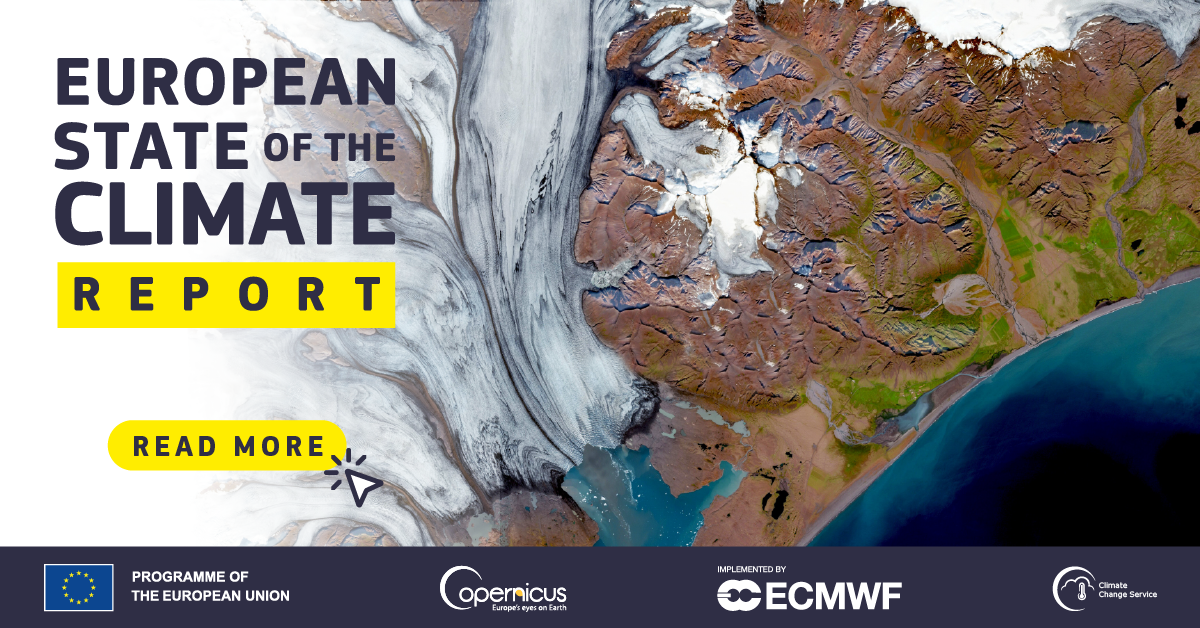Last April 22, the Copernicus Climate Change Service (C3S) – implemented by the European Centre for Medium-Range Weather Forecasts (ECMWF) and funded by the European Union – published its annual European State of the Climate (ESOTC) 2021 Report.
“This report provides a detailed analysis of the past calendar year, with descriptions of climate conditions and events, and explores the associated variations in key climate variables from across all parts of the Earth system. The ESOTC also gives updates on the long-term trends of key climate indicators.”
This year, you will find the global context as well as the situation in Europe and Artic in 2021, with trends in climate indicator. The three main points are the (i) increasing of greenhouse emissions, (ii) exceptionally long and important summer heatwave in the Mediterranean, (iii) variation in precipitation in Europe, including the flooding in western Europe.
About the Globe in 2021, you’ll find data and key messages for various climate indicators – temperature, sea surface temperature, greenhouse gases, ice sheets, glaciers, sea ice, sea level.
About Europe in 2021, you’ll find an overview compared to the long-term trends of variables across the climate system (with key messages), namely temperature, precipitation, soil moisture, clouds & sunshine duration, lake surface temperatures, river discharge, heat & cold stress, wildfires, atmospheric circulation. Also, you’ll find thematic sections featuring the key events that occurred during the year, described within a climatic context, namely the late spring frost, Mediterranean summer extremes, flooding in Europe, low winds.
About Arctic in 2021, you’ll find thematic sections providing an overview of key climate events in high northern latitudes during 2021, both at the surface and higher up in the atmosphere, namely temperature, wildfires, sea ice, low sea ice extent in the Greenland See.
Moreover, you’ll find animations and press resources, Climate bulletins and indicators.
***
Read the interactive Summary here.
Read the Full Report here.
Find the Copernicus bulletins & data here.

